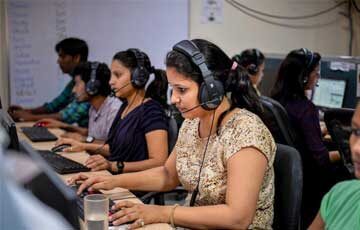Introduction and Scope of Creator’s Economy:
We are living in the era of content creation, known as content driven economy, which has skills development, new formats and types of content creation, training and dissemination of the content as the main drivers of economy. The growth of content marketing is unprecedented. According to MarketingCharts.com the Y-o-Y growth of content marketing is above 14% and absolute numbers are in excess of 32 billion USD worldwide.
According to a news article from LiveMint, India is leading the digital content creation wave with 1 million creators in the country. Estimated to have at least 100,000 subscribers or followers in three years, growing at 37% at an annualized level.” So, this will be apt to call this phenomenon that we have already entered a content creators’ economy. The use of content marketing has increased in scope globally and according to research conducted by CMI, companies of all sizes have started using the content marketing, be it small, mid-sized or large.
According to Research and Markets latest Report – “The content marketing is poised to grow by $584.02 bn during 2023-2027, accelerating at a CAGR of 16.37% during the forecast period.” There has been tremendous growth in terms of content creators, type of content and overall skills ecosystem.
Let’s understand what is content and who is content creator and what are the advantages of content in business promotion, marketing and overall economy. According to Adobe express a content creator is someone who creates entertaining or educational content in any channel or medium.
These are some of the advantages of content creation for our economy.
- Employment generation amongst youth and even people of any age group
- Self-reliance and standing on their own feet.
- Financial support to orphans, school / college dropouts, single mothers and divorced.
- Improvement in the GDP of the country
- Less pressure on state and national governments on the job creation
- Opportunity to grow revenues from multiple platforms, languages and countries.
Content creation can be done in multiple languages. Content creators can create different content types and the same can be disseminated via multiple different platforms including social media. In the broader aspect the content creation and content creators are perceived as the majority in the new digital media platforms.
These are some of the ideas for making India as the global content creation hub:
- We need to start at an early age and include content creation in early school and childhood class curriculum. We may need to learn from global examples and need to include this aspect into our primary education and private schools’ curriculum.
- Involve all stakeholders for facilitating the creation of infrastructure and studios for content creation as the content creation involves usage of technology tools, software and hardware which tend to be costly at times and not everyone aspiring to be the content creators can afford the same. There is a need to create public-private infra, may be in the public or private libraries or in the cyber cafe near you. We may also think of utilizing the Common service centers (CSC) model for the same.
- Incentivize and make export of content and skills training services even more rewarding the content creators start earning a decent amount of money after they reach a particular level in terms of subscribers, content views and brands mentions. Before they reach that level there are no incentives for them. Could we look at starting a scholarship or incentivizing the efforts of early content creators, so that many more people are motivated to move towards that path.
- Involve private sector for content creators’ skill development training via their CSR budgets. Annual CSR funds spent by profitable companies in India constitutes an amount in excess of INR 25,715 crores in the year 2020-2021. The government generally does not provide any directions on the sectoral spending, and which majorly constitutes spends in healthcare, education and rural development. However, there can be guidelines to increase their spends for the enablement of the content creators from this spend.
- Give additional grants and taxation support to startups working in the area of enablement of content creators. There is a lot of scope for growth of innovations in the creator’s ecosystem. We can enable incubators and state startup funds to have special focus on the startups working in this area by way of funding support to build commonly used infrastructure, tools, platforms and innovation.
- Existing national and state bodies involved in skills development can have a new department, if not there already. Identification of emerging skills like content creation, providing the free training, enablement of the community and finding the avenues for connecting all the existing old-age skills via new content creation economy has to be done. India has traditionally been known for imparting 64 skills as per our old scriptures and there is a saying that lord Krishna learnt all the 64 skills in just 60 days. On the face of it, this seems impossible, but can technology help in achieving the same in the current era where Metaverse is the new face of collaboration.
- Convert ITIs to be the skills development hubs across India and make it mandatory for each and every citizen to learn skills of their choice. Could we include content creation as a mandatory subject in each and every program which ITIs offer. This will help empower lakhs of students who may want to also become content creators.
- Engage government and private universities and start offering short term certificate courses in various skills via regular or online methods. Could UGC or AICTE mandate a Free certificate course on how to become a content creator by all the Universities / Deemed to be universities. This will help in promoting this skill amongst youngsters.
- Make content creation related procurement of equipment, hardware, accessories and software tax and import duties free. This step would help in increasing the sales and bringing the cost down of this technology enabled products. Government shall also promote setting up manufacturing at scale for domestic companies within India.
- Do a nationwide campaign for the role and importance of content creators and creators’ economy. Niti Aayog can be spearheading this initiative and campaign. There can be a series of content creators’ stories who have made big and also for those who are yet to make it big. The nationwide campaign can talk about their struggle and success stories. Companies and platforms like YouTube, Instagram can be co-sponsors of these campaigns. We can use mass media and digital media for these campaigns.
- Create a government funded community and platform on the lines of ONDC, accessible via web and mobile app for listing all influencers, micro influencers, mini influencers, content craters, certified creators and even aspiring to be big and give them mandatory content creators ID linked to Aadhar number This will help in promoting the transparent income and taxation for digital creators which is a big challenge question as of now for tax enforcement authorities. Maybe to bring more transparency, can we make their earning tax free for a few years or till reaching a particular higher slab.





